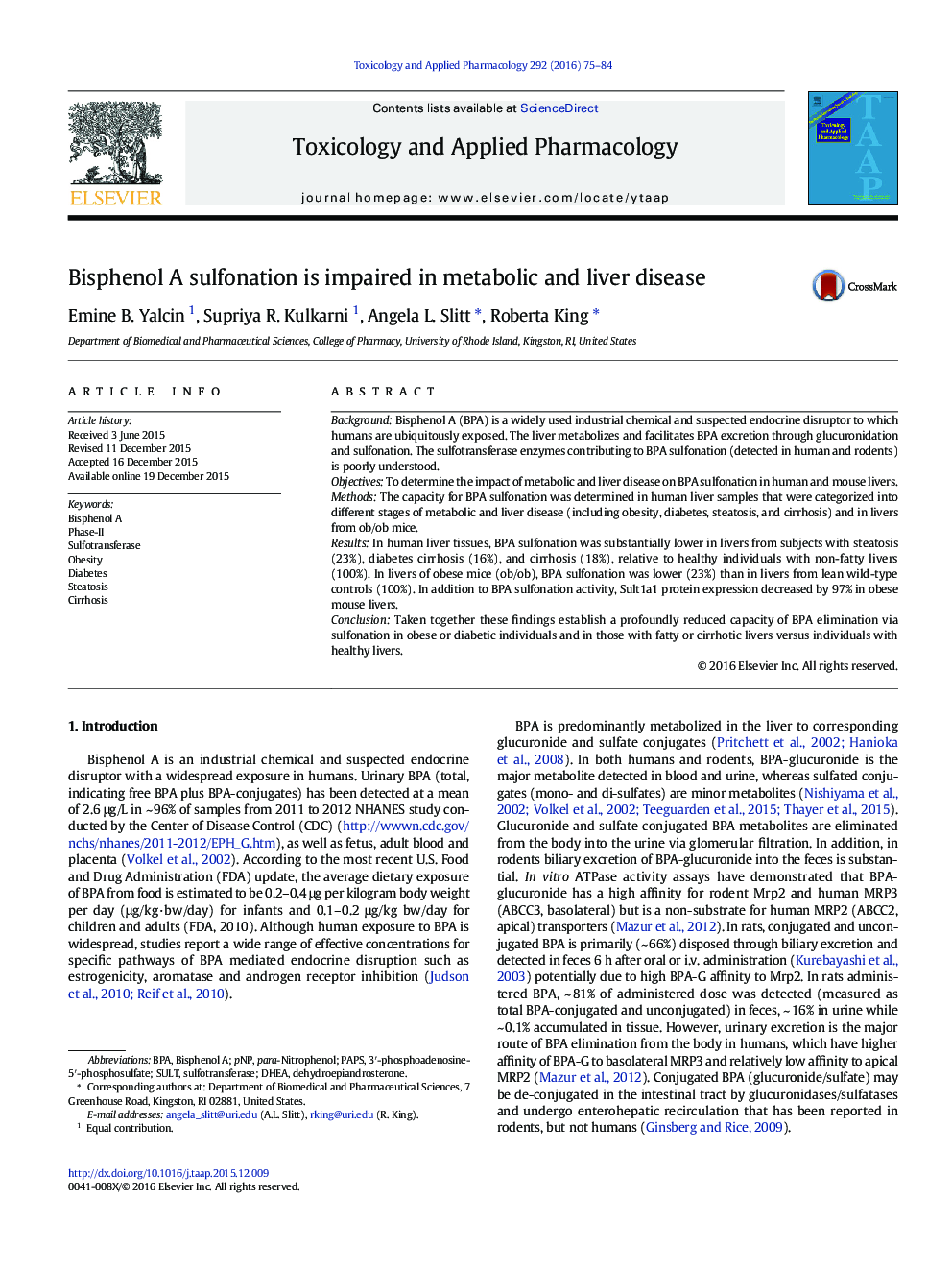| کد مقاله | کد نشریه | سال انتشار | مقاله انگلیسی | نسخه تمام متن |
|---|---|---|---|---|
| 2568149 | 1561170 | 2016 | 10 صفحه PDF | دانلود رایگان |
• Present study demonstrates that hepatic SULT 1A1/1A3 are primarily sulfonate BPA in mouse and human.
• Hepatic BPA sulfonation is profoundly reduced steatosis, diabetes and cirrhosis.
• With BPA-S detectable in urine under low or common exposures, these findings are novel and important.
BackgroundBisphenol A (BPA) is a widely used industrial chemical and suspected endocrine disruptor to which humans are ubiquitously exposed. The liver metabolizes and facilitates BPA excretion through glucuronidation and sulfonation. The sulfotransferase enzymes contributing to BPA sulfonation (detected in human and rodents) is poorly understood.ObjectivesTo determine the impact of metabolic and liver disease on BPA sulfonation in human and mouse livers.MethodsThe capacity for BPA sulfonation was determined in human liver samples that were categorized into different stages of metabolic and liver disease (including obesity, diabetes, steatosis, and cirrhosis) and in livers from ob/ob mice.ResultsIn human liver tissues, BPA sulfonation was substantially lower in livers from subjects with steatosis (23%), diabetes cirrhosis (16%), and cirrhosis (18%), relative to healthy individuals with non-fatty livers (100%). In livers of obese mice (ob/ob), BPA sulfonation was lower (23%) than in livers from lean wild-type controls (100%). In addition to BPA sulfonation activity, Sult1a1 protein expression decreased by 97% in obese mouse livers.ConclusionTaken together these findings establish a profoundly reduced capacity of BPA elimination via sulfonation in obese or diabetic individuals and in those with fatty or cirrhotic livers versus individuals with healthy livers.
Journal: Toxicology and Applied Pharmacology - Volume 292, 1 February 2016, Pages 75–84
